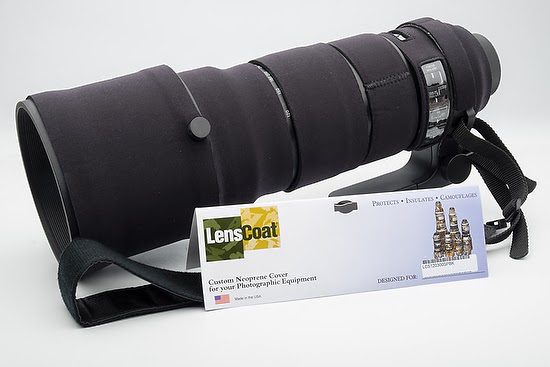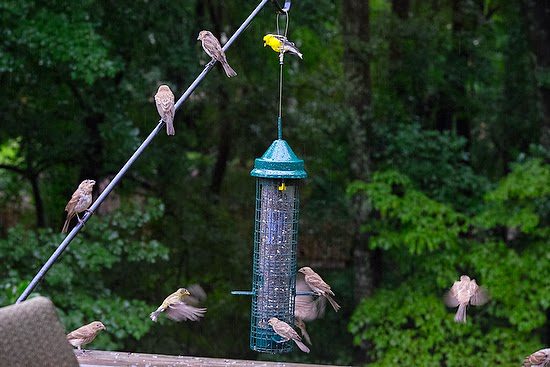Not long after I bought my first Sigma 120-300mm ƒ/2.8, I invested in the LensCoat Neoprene Cover for the lens.
On the most basic level, it prevents cosmetic blemishes on the surface of the lens and helps retain the value of the lens. However, your lens will still depreciate. Look at KEH’s guide, and you will see how much depreciation is cosmetic.
KEH grades:
| NEW | New defined as packaged by manufacturer complete with manufacturer’s USA warranty. Not previously owned or used by a consumer. *You have probably seen the words “NEW” or “LOWER PRICE” listed online or in our catalog, where prices usually appear. Due to specific manufacturers’ minimum pricing requirements, we are not permitted to publish the price if we sell it for less than the manufacturer’s Minimum Advertised Price (MAP). While these listings may seem inconvenient, it is our way of letting you know that when you call or click through on the website, you will be quoted the lowest pricing anywhere for comparable items. |
| DEMO | The demo is defined as packaged by the manufacturer, complete with the manufacturer’s USA warranty. She was never owned by a consumer but used for demonstration. |
| LN | “Like New” Includes the original box and instructions. |
| LN- | “Like New Minus” Extremely slight wear only seen upon very close inspection. Box and accessories are usually not included. Glass perfect*. |
| EX+ | “Excellent Plus” is Exceptionally nice. It May have slight wear on the finish but is visible only under close inspection. Glass is very clean*. |
| EX | “Excellent” Shows moderate wear. It may have minor dents, dings, and slight finish wear. Glass may have little marks and blemishes that will not affect picture quality*. |
| BGN | “Bargain” Shows more than average wear. It May have dents, dings, brassing, and finish loss. Glass may have marks and blemishes that should not affect picture quality*. |
| UG | “Ugly” Very rough looking. Multiple impressions in metal, excessive finish loss, and brassing. Glass will have marks, fungus, and haze, affecting picture quality. |
| AI | “As-Is” is Usually to be used for parts only. All equipment sold in the As-Is category carries no warranty nor return privileges. The equipment most likely doesn’t work and may have missing pieces. Defects include but are not limited to the problems listed in the description. |
Here you can see the lens without the lens coating; that is how I hope to keep it looking for a long time.
A great feature includes a clear, flexible UV-PVC window over the AF/IS/VR controls and the distance-scale window. This window also helps you from accidentally bumping and changing those settings.
LensCoat® Lens Covers are manufactured from 100% closed-cell neoprene, offering protection from bumps, jars, and nicks, with a camouflage-pattern fabric cover. LensCoat® Lens Covers also provide a thermal barrier, protecting your hands from cold lenses in lower temperatures. In addition, they are easy to install and remove, sliding on like a sleeve and leaving no residue on the lens. And LensCoat® lens covers are waterproof, protecting in harsh conditions.
If the LensCoat performs as well on this lens as the last one I had on my older 120-300mm, I will recover the cost of the $89.
Here is a video explaining the product that LensCoat produced.








